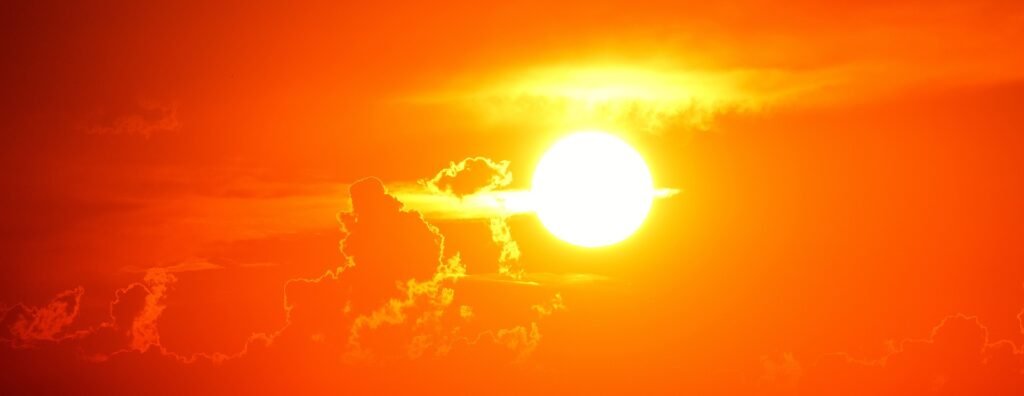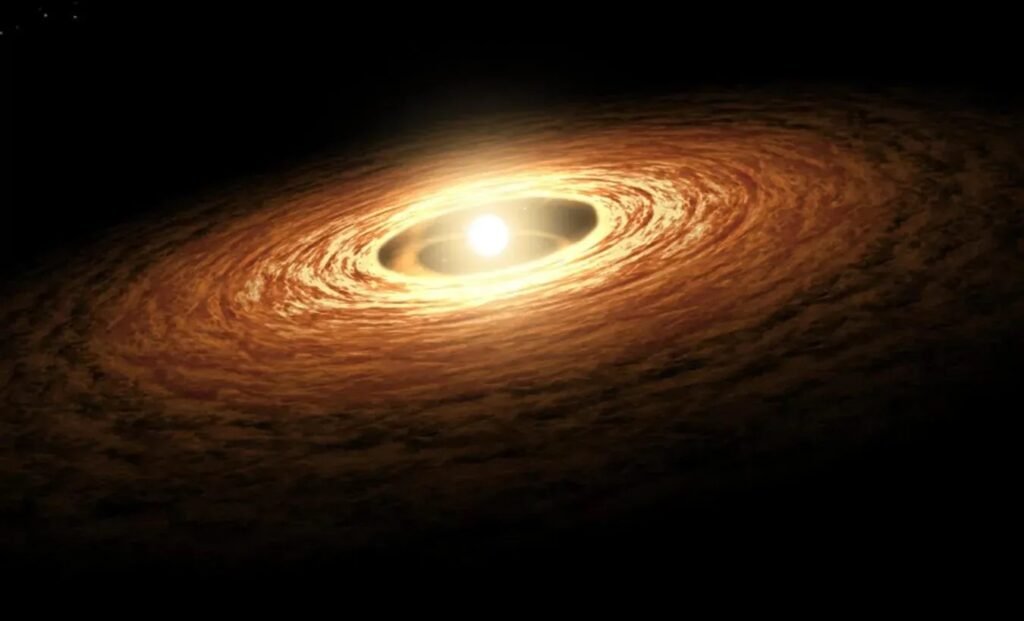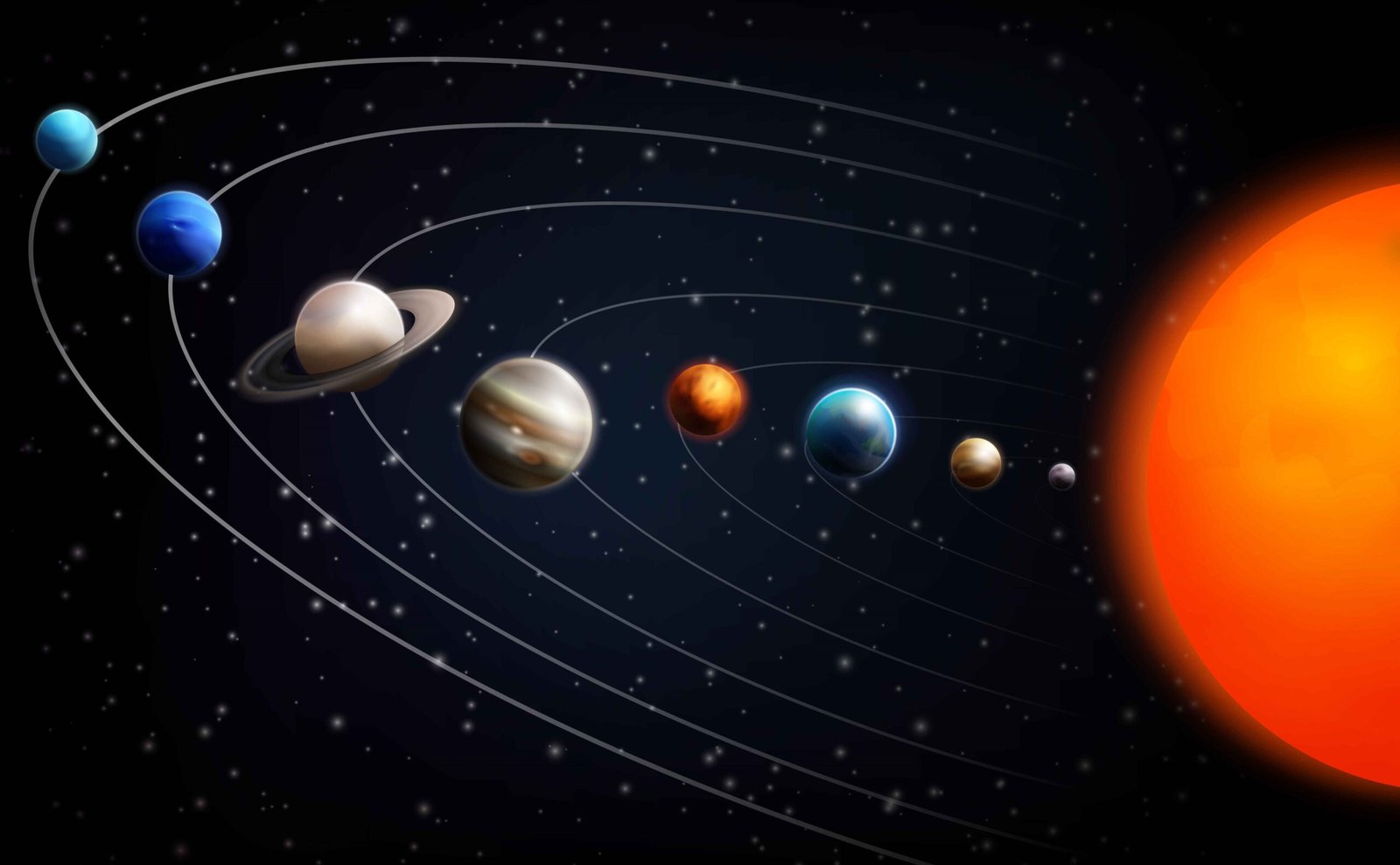Why do planets form around the Sun? The cosmic ballet of planets orbiting the Sun is not just a spectacular view in our solar system; it is a phenomenon that sparks curiosity and wonder. Have you ever wondered why planets choose to dance around the Sun instead of wandering off into the vastness of space? In this article, we’ll unravel the science behind the formation of planets around the Sun. We’ll dive into the mechanics of gravity, the process of planet formation, and explore why these celestial bodies settle into orbits around their central star. Prepare for a journey through space and time as we uncover the mysteries of planetary formation.

Imagine looking up at the night sky and seeing the vast expanse of stars, each possibly hosting its own planetary system. Our own solar system, with planets gracefully orbiting the Sun, is a prime example of this cosmic wonder. But have you ever stopped to ponder why planets form around the Sun? It’s a question that has intrigued scientists and astronomers for centuries, and the answer lies in the intricate dance of physics, gravity, and cosmic dust. In this article, we’ll explore the fascinating process of planetary formation and discover why these celestial bodies are irresistibly drawn to their stellar hosts.
The Birth of the Solar System
To understand why planets form around the Sun, we need to travel back in time to the birth of our solar system, about 4.6 billion years ago.
Why do planets form around the Sun? Formation of the Solar Nebula
The story begins with a massive cloud of gas and dust, known as the solar nebula. This nebula, floating through the Milky Way, was composed primarily of hydrogen and helium, with traces of heavier elements. Over time, something remarkable happened—a disturbance, perhaps caused by a nearby supernova, triggered the collapse of this nebula.
As the nebula collapsed under its own gravity, it began to spin, forming a flat, rotating disk. This disk, known as the protoplanetary disk, is where the magic of planet formation occurs. At the center of this disk, the Sun began to form, igniting nuclear fusion and becoming the gravitational anchor for the entire solar system.
The Role of Gravity in Shaping the Solar System
Gravity played the starring role in the formation of our solar system. As the nebula collapsed, gravity caused the material within the disk to clump together. This clumping is the first step in building the planets we know today. But why do these clumps, or planets, settle into orbits around the Sun? The answer lies in the interplay between gravity and motion.
Understanding Gravity and Orbits
To grasp why planets orbit the Sun, it’s essential to understand how gravity works in the cosmic theater.
How Gravity Works in Space
Gravity is the invisible force that attracts objects toward one another. In space, this force is responsible for the celestial ballet we observe. The strength of gravity depends on two key factors: the mass of the objects involved and the distance between them. The Sun, being the most massive object in our solar system, exerts a tremendous gravitational pull on everything around it.
The Concept of Orbits and Why Planets Follow Them
An orbit is essentially a balance between two forces: gravity and inertia. As a planet moves through space, gravity pulls it toward the Sun. Simultaneously, the planet’s inertia—a result of its velocity—wants to propel it in a straight line into the vastness of space. The result? A delicate balance that keeps the planet in a continuous curved path around the Sun.
Imagine swinging a ball on a string around your head. The string represents gravity, pulling the ball inward, while your hand’s motion keeps the ball moving forward. In this cosmic analogy, the Sun is the center, and the planets are the balls, perpetually in motion, tethered by the invisible string of gravity.
The Sun: The Solar System’s Gravitational Anchor

The Sun is not just the shining star at the center of our solar system; it’s the gravitational anchor that keeps everything in place.
Why the Sun Holds Everything Together
The Sun’s massive size—accounting for more than 99% of the total mass of the solar system—makes it the primary source of gravitational pull. This immense gravity ensures that planets, comets, and asteroids remain in orbit, bound to their stellar master.
How the Sun’s Gravity Affects Planetary Motion
The Sun’s gravity affects each planet differently, depending on its distance. Planets closer to the Sun, like Mercury and Venus, experience a stronger gravitational pull, resulting in faster orbits. In contrast, distant planets like Neptune have slower orbits, as the Sun’s pull weakens with distance.
Accretion: The Building Blocks of Planets
At the heart of planet formation lies a process known as accretion—the gradual growth of celestial bodies from smaller particles.
The Process of Accretion in Planetary Formation
Accretion begins within the protoplanetary disk, where dust and gas particles collide and stick together, forming larger and larger bodies. Over millions of years, these particles coalesce to form planetesimals, the building blocks of planets.
The Role of Dust and Gas in Forming Planets
Dust grains, composed of silicates, ice, and metals, serve as the seeds for planet formation. As these grains collide, they form larger aggregates, eventually leading to planetesimals and, subsequently, planets. Meanwhile, gas—primarily hydrogen and helium—plays a crucial role in forming gas giants like Jupiter and Saturn.
The Protoplanetary Disk
The protoplanetary disk is the cosmic nursery where planets are born.
What is a Protoplanetary Disk?

A protoplanetary disk is a rotating disk of gas and dust surrounding a newly formed star. This disk is the birthplace of planets, providing the raw materials necessary for their formation.
How Planets Form Within This Disk
Within the protoplanetary disk, dust particles collide and stick together, forming planetesimals. These planetesimals continue to collide, growing larger until they become protoplanets. Eventually, these protoplanets clear their orbits of debris, becoming fully-fledged planets.
The Formation of Planetesimals
Planetesimals are the precursors to planets, and their formation is a critical step in the birth of a solar system.
From Dust to Planetesimals
As dust particles within the protoplanetary disk collide, they form aggregates
that gradually grow into planetesimals. These bodies, ranging from a few kilometers to hundreds of kilometers in size, are the building blocks of planets.
How These Building Blocks Lead to Planets
Once formed, planetesimals engage in a cosmic game of bumper cars, colliding and merging to form larger bodies. Over time, these collisions result in the formation of protoplanets, which continue to grow until they clear their orbits and become planets.
The Influence of the Sun’s Gravity on Planetary Orbits
Gravity is the guiding force that determines the shape and stability of planetary orbits.
How Gravity Determines the Shape of Orbits
Gravity not only keeps planets in orbit but also determines the shape of their paths. Most planets follow elliptical orbits, with the Sun at one of the focal points. This shape results from the gravitational interplay between the Sun and the planets.
The Stability of Planetary Orbits
Planetary orbits are remarkably stable, allowing planets to maintain their paths for billions of years. This stability arises from the balance between gravitational pull and the planets’ inertial motion.
Why Do Planets Orbit Instead of Collide?
In the vastness of space, why do planets orbit the Sun instead of crashing into it or one another?
The Balance Between Gravitational Pull and Velocity
The answer lies in the delicate balance between gravitational pull and velocity. While gravity pulls planets toward the Sun, their velocity ensures they maintain a safe distance. This balance prevents collisions and keeps planets in stable orbits.
The Role of Angular Momentum in Preventing Collisions
Angular momentum, a measure of a planet’s motion around the Sun, plays a crucial role in maintaining orbits. It acts as a cosmic brake, preventing planets from spiraling into the Sun or colliding with each other.
The Role of Collisions and Mergers in Planet Formation
Collisions and mergers are pivotal in shaping planetary bodies and their orbits.
How Collisions Shape Planetary Bodies
Collisions between planetesimals lead to the formation of protoplanets. These impacts not only contribute to growth but also shape the physical characteristics of planets, such as their surfaces and atmospheres.
The Impact of Mergers on Planet Formation
Mergers between protoplanets result in the formation of larger planetary bodies. These mergers, driven by gravitational attraction, are essential for creating planets capable of clearing their orbits of debris.
The Difference Between Terrestrial and Gas Giant Planets
The solar system boasts a diverse array of planets, from rocky worlds to massive gas giants.
Why Some Planets Are Rocky and Others Are Gaseous
The composition of planets depends on their location within the solar system. Terrestrial planets, like Earth and Mars, are rocky due to their proximity to the Sun, where temperatures are higher, preventing gas accumulation. In contrast, gas giants like Jupiter and Saturn formed farther from the Sun, where cooler temperatures allowed gases to condense and accumulate.
The Role of Location in Determining Planet Types
The distance from the Sun plays a pivotal role in determining a planet’s composition. Closer to the Sun, rocky materials dominate, while farther away, gas and ice become more prevalent, leading to the formation of gas giants.
The Goldilocks Zone: The Perfect Spot for Life
The Goldilocks Zone, or habitable zone, is the region around a star where conditions are just right for liquid water to exist, making it the perfect spot for life.
What is the Goldilocks Zone?
The Goldilocks Zone is the region where a planet is neither too hot nor too cold, allowing liquid water to exist on its surface. This zone is crucial for the potential of life, as water is essential for life as we know it.
Why Earth is in the Perfect Position for Life
Earth’s position within the Sun’s Goldilocks Zone makes it an ideal candidate for life. The right distance from the Sun ensures a stable climate, allowing for the presence of liquid water and a diverse ecosystem.
The Search for Exoplanets: Planets Beyond Our Solar System
The quest to discover planets beyond our solar system has captivated astronomers and scientists alike.
How Astronomers Search for Planets Around Other Stars
Astronomers employ various methods to detect exoplanets, including the transit method, which observes the dimming of a star as a planet passes in front of it, and the radial velocity method, which detects wobbles in a star’s motion caused by gravitational interactions with orbiting planets.
The Significance of Finding Exoplanets
Discovering exoplanets expands our understanding of the universe and the potential for life beyond Earth. Each new discovery offers insights into planetary formation and the conditions necessary for life.
Future Explorations and Discoveries
The future of planetary exploration holds exciting prospects and potential breakthroughs.
Upcoming Missions to Study Planet Formation
Future missions, such as the James Webb Space Telescope, aim to study planet formation in unprecedented detail. These missions will provide insights into the early stages of planetary development and the conditions necessary for life.
The Future of Planetary Exploration
As technology advances, so does our ability to explore and understand the cosmos. Future explorations may unveil the mysteries of planetary formation, offering a deeper understanding of our place in the universe.
Conclusion
The formation of planets around the Sun is a cosmic dance orchestrated by gravity, motion, and time. From the initial collapse of the solar nebula to the stable orbits we observe today, this process is a testament to the wonders of nature. As we continue to explore the universe, the formation of planets remains a captivating mystery, inviting us to ponder the intricate mechanics that govern the celestial realm.
FAQs
What is the main reason planets form around the Sun?
Planets form around the Sun primarily due to gravity, which causes particles within the protoplanetary disk to clump together and eventually form planets that settle into stable orbits around their stellar host.
How long does it take for planets to form?
The process of planet formation can take millions to billions of years, starting from the initial collapse of the solar nebula to the formation of planetesimals and the eventual development of fully-fledged planets.
Why do some planets have moons?
Moons form through various processes, including accretion within the planet’s gravitational influence, capture of passing celestial bodies, or as remnants of collisions. These moons are held in orbit by the planet’s gravitational pull.
Can planets form around other stars?
Yes, planets can and do form around other stars. The discovery of exoplanets—planets beyond our solar system—has confirmed that planetary formation is a common occurrence in the universe.
What is the largest planet in our solar system?
Jupiter is the largest planet in our solar system, with a mass more than 300 times that of Earth and a diameter of approximately 143,000 kilometers (89,000 miles).

